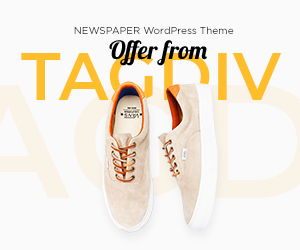The two-day virtual Newspaper Redesign Workshop on November 10–11, 2025, by World Association of News Publishers (WAN-IFRA), led by design expert Jon Wile, will train newsrooms to reinvent print for modern readers — focusing on visual storytelling, template strategy, redesign execution, and effective design feedback — to build sustainable, high-impact, loyalty-driving print products.

Long after many media execs prematurely declared print irrelevant, a masterclass on newspaper redesign — led by one of the world’s most influential news design leaders — is attracting global attention. American design leader Jon Wile will run a virtual, two-day strategic workshop on print publication reinvention — a signal that the smartest newsrooms are no longer asking whether print has a future, but what kind of print is worth keeping.
Hosted as a focused masterclass rather than a broad webinar,the Newspaper Redesign Workshop is positioned not as nostalgia management, but as strategy — a rethink of the print product for the attention-fractured, design-aware, loyalty-driven reader of 2025. It is not a how-to-make-it-prettier workshop. The language is precise: surprise, sustain, differentiate, earn loyalty, support business goals — not merely survive.
The workshop is led by Jon Wile, Vice President of Design at American City Business Journals, a heavyweight who oversees visual direction across 40 publications and more than 50 designers. Formerly of The Washington Post and current President of the Society for News Design, Wile represents the exact kind of operator newsrooms are now scrambling to understand — someone who knows how to align aesthetics with reader habit, business strategy, and repeatable design intelligence.
The structure is surgical. Day One begins with “Print Publication Design,” a recalibration of what still makes physical newspapers valuable — a reminder that print is not dead, but unforgivably boring when treated mechanically. Wile will deep-dive into visual storytelling and the editorial logic behind smart visual editing — the choices that make a printed page feel alive, not just filled. The session then moves into the unsentimental mechanics: template systems, style sheets, and the discipline of design consistency. Beauty, here, is operational — not ornamental.
Session Two of Day One goes tactical. Simply titled “Redesign – The Prep,” it tackles the political and cultural minefield inside most legacy institutions. Wile attempts to define what the word “redesign” really means — a necessary step, given how often the word gets abused as a synonym for cosmetic overhaul. He then drills into stakeholder mapping, decision ownership, and how redesign efforts collapse when they are treated as a side-project rather than cultural reset. The framing is clear: great redesigns do not begin in InDesign. They begin in alignment.
Day Two is where things move from philosophy to build-mode. The third session, “Redesign – The Build,” is where participants enter the application layer: contemporary print architecture, modular systems that scale without looking templated, and the mechanics of delivering visual surprise inside a templated workflow. The emphasis on “maximizing templates to improve efficiency” is revealing — this is redesign as throughput optimization, not just visual upgrade. It closes with a deliberately competitive instinct: enhancing uniqueness. A print product that does not have a distinctive visual fingerprint — Wile implies — is dead on arrival in 2025.
The final session is one of the least discussed — but most essential — skills in modern newsroom design culture: how to give design feedback. Many print redesigns aren’t killed by bad ideas — they’re killed by feedback that is either vague, impatient, ego-driven, or linguistically incompatible between editorial and design. The session breaks this down empathetically: how to “speak the designer’s language,” how to articulate edits that sharpen rather than obstruct, how to make feedback a tool of acceleration rather than alienation.
This masterclass arrives at a moment when many publishers — especially in India, Southeast Asia, and the US — are quietly reconsidering print not as legacy ballast, but as a premium, habit-locking, high-trust product. The global digital ecosystem is increasingly identical — infinite scrolls, same visual grammar, same typography, same rhythm of consumption. Print, paradoxically, is once again where brands can be most visually differentiated.
What this workshop signals is a strategic reset: print is no longer about nostalgia. It is about editorial experience design — and it is being rearchitected by teams that understand pace, pattern, loyalty, and business, not just layout. That is why this two-day masterclass — short, intentional, tactical — is drawing attention beyond the traditional newsroom design crowd. It isn’t just for designers. It’s for decision-makers — those about to choose whether their print product is a strategic asset or a slow, silent liability.






